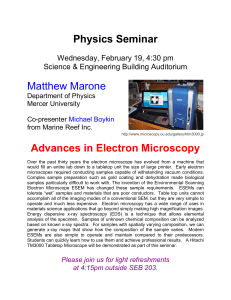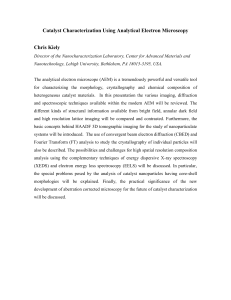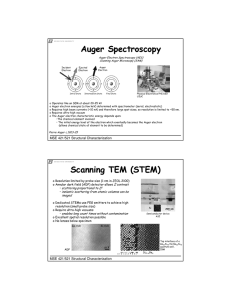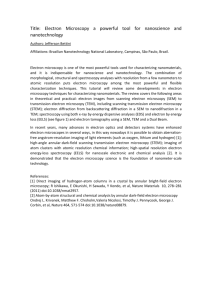Evolving the Frontiers of Analytical Electron Microscopy for High
advertisement
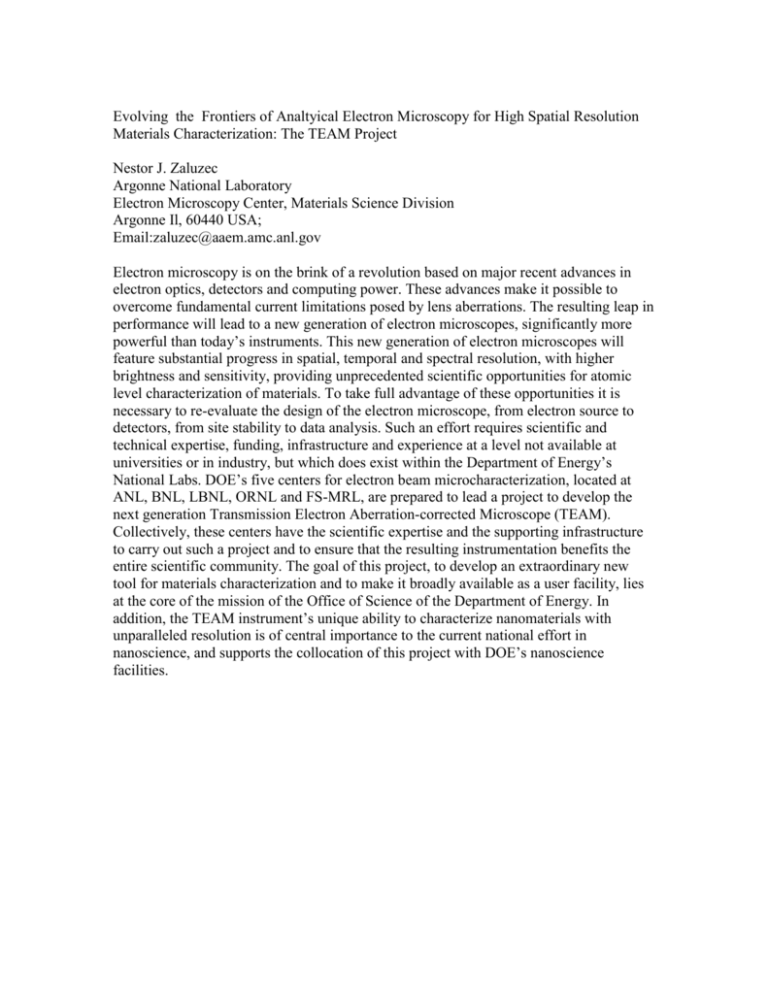
Evolving the Frontiers of Analtyical Electron Microscopy for High Spatial Resolution Materials Characterization: The TEAM Project Nestor J. Zaluzec Argonne National Laboratory Electron Microscopy Center, Materials Science Division Argonne Il, 60440 USA; Email:zaluzec@aaem.amc.anl.gov Electron microscopy is on the brink of a revolution based on major recent advances in electron optics, detectors and computing power. These advances make it possible to overcome fundamental current limitations posed by lens aberrations. The resulting leap in performance will lead to a new generation of electron microscopes, significantly more powerful than today’s instruments. This new generation of electron microscopes will feature substantial progress in spatial, temporal and spectral resolution, with higher brightness and sensitivity, providing unprecedented scientific opportunities for atomic level characterization of materials. To take full advantage of these opportunities it is necessary to re-evaluate the design of the electron microscope, from electron source to detectors, from site stability to data analysis. Such an effort requires scientific and technical expertise, funding, infrastructure and experience at a level not available at universities or in industry, but which does exist within the Department of Energy’s National Labs. DOE’s five centers for electron beam microcharacterization, located at ANL, BNL, LBNL, ORNL and FS-MRL, are prepared to lead a project to develop the next generation Transmission Electron Aberration-corrected Microscope (TEAM). Collectively, these centers have the scientific expertise and the supporting infrastructure to carry out such a project and to ensure that the resulting instrumentation benefits the entire scientific community. The goal of this project, to develop an extraordinary new tool for materials characterization and to make it broadly available as a user facility, lies at the core of the mission of the Office of Science of the Department of Energy. In addition, the TEAM instrument’s unique ability to characterize nanomaterials with unparalleled resolution is of central importance to the current national effort in nanoscience, and supports the collocation of this project with DOE’s nanoscience facilities.

